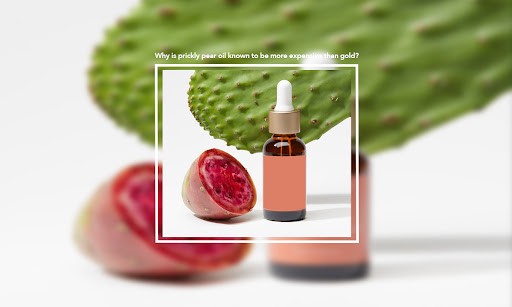Prickly pear oil and its properties:
Prickly pear – a perennial plant of the cactus family, grows in the plains of Central America, Argentina and Canada. It is also grown in the Caucasus, Turkmenistan and Crimea. Cold-pressed seeds of Opuntia (aloe ordinary) get the most valuable oil, which has long been used in cosmetics and medicines. It rightfully deserves the title “elixir of youth”.
prickly pear Other names were also given, such as ‘pearl’, ‘Indian fig’, ‘Westwood pear’ and ‘mother husband’. The juice of this fruit gives a deep red color and has many benefits. Prickly pears have flat or round, oval, prickly stems. It can be long, thick, thin or short. The prickly pear can be found in the deserts of North America, Western South America, Mexico, as well as in Canada. This aloe vera plant blooms in red, yellow, or reddish-purple and grows to a height of 1-6 feet. The juice and stems of prickly pear fruits contain very important nutritional values that provide many health benefits.
Studies show that the substances in prickly pear juice have benefits such as lowering blood sugar, lowering cholesterol, and killing viruses in the body. Read on to learn about the various benefits of prickly pear.
How the prickly pear has been used historically:
Over the years, this aloe vera plant has been used for many purposes. It was used not only for edible and healing purposes, but also for dyeing. The versatility of the prickly pear is very unusual.
The Chinese use it to heal abscesses, while Native Americans and Mexicans enjoy eating the fruit and making syrup from it to treat asthma and whooping cough. In traditional Mexico, the plant was used to treat diabetes and high cholesterol.
In recent years, prickly pear oil has become a popular ingredient for use in skin care. but that is not all. At an exciting time of events, scientists are now considering ways to use the plant as a sustainable energy source, but the research is still in its early stages.
1- Antioxidant benefits:
The prickly pear contains essential vitamins and minerals for the body. Contains potassium, magnesium, calcium and iron. It is also high in fiber and the antioxidant vitamin A, which is found in the form of beta-carotene. It also contains vitamin C, an antioxidant. Antioxidants act as a disinfectant against free radicals in the body, prevent arterial cholesterol and reverse damage to the arteries. Thus, antioxidants help prevent cancer and aging.
2- Anti-inflammatory properties:
Among the thousands of plant species, chervil is the only one known to contain all 24 betalains, known as powerful anti-inflammatory antioxidants. Therefore, the prickly pear is very useful for chronic inflammatory diseases.
3- Hangover:
Several studies show that drinking prickly pear juice before drinking alcohol reduces some symptoms that will occur the next day. The juice of this fruit appears to significantly reduce symptoms of loss of appetite, nausea, and dry mouth. However, it does not reduce symptoms such as headache, diarrhea, or dizziness.
4 -Amino acids:
The prickly pear contains a full range of amino acids, which are the building blocks of proteins, including 8 essential amino acids that the body cannot produce. It is very rare for a plant to contain so many essential amino acids.

5 -diabetic:
The stems of a type of prickly pear cactus called “Opuntia streptacantha” help lower blood sugar levels in people with type 2 diabetes. Even a single dose of this cactus can lower blood sugar levels by 17-46%. However, it is not yet known whether its daily use can consistently reduce blood sugar levels.
Prickly pear syrup recipe:
To make prickly pear syrup, use 20 pears. Remove the thorns, wash the fruit and chop it into small pieces.
Puree all the pieces in a food processor.
Strain the puree through a piece of cheesecloth.
Add 1 and a half cups of sugar, and cook slowly over medium heat for 15 minutes.
Then add lemon juice to it. Fill a clean jar, let it cool, and consume it within a few weeks.
Aside from making prickly pear syrup, you can also use this fruit to cook other fun dishes. You can make jelly, marmalade, or pickles. You can also combine prickly pears with shrimp or chicken to make some delicious and healthy dishes. If you are not sure how to use prickly pears to create such dishes, a quick search on the Internet will reveal to you many interesting recipes.
When choosing prickly pears, avoid those that are soft or have dark soft spots on them. This fruit is usually harvested in late summer or early fall. If you are picking the fruits from the plant, use leather or rubber gloves. The fruits you collect ripen at room temperature. Always remove the thorns before cooking or juicing.
To see an article on what is the safest plastic to use with food, click on the following link:
https://cubii.co/en/what-is-the-safest-plastic-to-be-used-with-food/
To see the CUBII juice production line consisting of 5 machines, juice filling machine, bottle closing machine, cap sterilizer, juice cooling tunnel and juice bottle dryer, click the following link:
http://https://www.youtube.com/watch?v=gpBtNR2-qno




